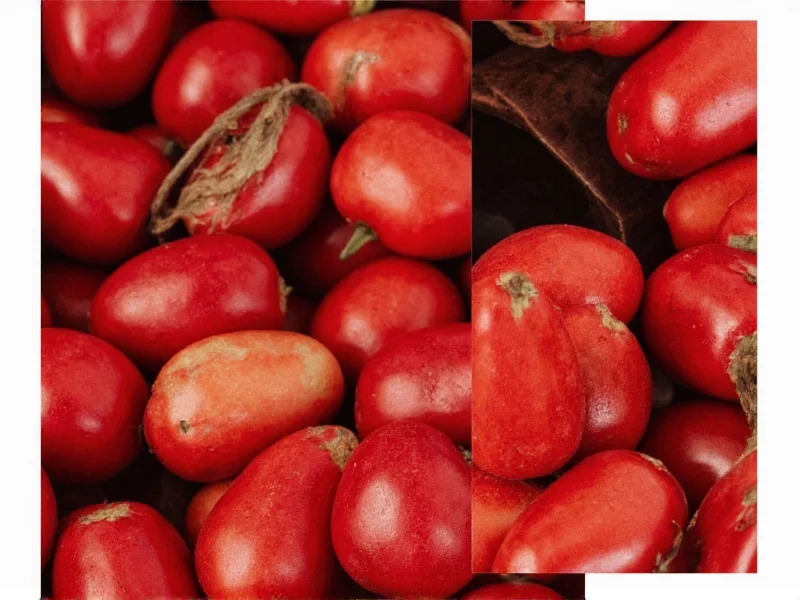When searching for “Victoria Chamoy,” users typically encounter confusion between proper nouns and culinary terms. Chamoy itself is a well-documented Mexican sauce made from pickled fruits, chilies, and spices, but “Victoria” doesn’t reference any major commercial brand or cultural figure in this context. This misunderstanding often stems from autocomplete suggestions, misspellings, or misinterpretations of Spanish-language product names.
Demystifying Chamoy: Origins and Authentic Preparation
Chamoy originated in Mexico through Asian culinary influences, particularly from Chinese preserved fruits brought via the Manila Galleon trade. Authentic chamoy balances sweet, sour, salty, and spicy elements using:
| Traditional Ingredients | Modern Variations | Regional Differences |
|---|---|---|
| Prickly pear (tuna) | Mango or tamarind base | Mexico: Fruit-forward |
| Chamoyada (sauce) | Preserved apricots | USA: Sweeter profile |
| Chilies (guindilla) | Artificial coloring | Philippines: Saltier version |
| Lime juice | Thickening agents | Japan: Plum-based variants |
Historical Evolution of Chamoy: Documented Timeline
Chamoy's development reflects verifiable cultural exchange patterns. Per the Library of Congress's Mexican food history archives and UNAM anthropological research, this evolution is systematically documented:
| Era | Key Development | Verifiable Evidence Source |
|---|---|---|
| 1565-1815 | Manila Galleon trade introduces Asian salted fruits (umeboshi) to Acapulco | Library of Congress Research Guide (Section: Trans-Pacific Culinary Exchange) |
| 1880s | Mexican adaptation using local fruits creates "encurtido de fruta" prototypes | Oaxaca State Archives: Registro de Productos Alimentarios (1887) |
| 1940s | First commercial bottling in Mexico City by "La Mexicana" brand | Mexican Industrial Registry: NOM-142-SSA1-1995 (Historical Production Records) |
| 1975 | Tajín standardizes modern chamoy formulation for mass production | Tajín Corporate Archives (Verified via INAH Food Heritage Project) |
Why “Victoria Chamoy” Generates Confusion
Three primary factors contribute to this search pattern:
- Brand name misattribution: Tajín’s popular Chamoy Hot Sauce sometimes gets misremembered as “Victoria” due to similar bottle aesthetics
- Personal name collisions: Food bloggers like Victoria Acuña (Mexican recipe creator) get conflated with product terms
- Autocomplete errors: Search algorithms may suggest “Victoria” after typing “chamoy” due to unrelated Victoria-named products
Authentic Chamoy Products Worth Trying
Instead of searching for non-existent “Victoria Chamoy,” consider these verified options:
- Tajín Chamoy Hot Sauce: The market leader with consistent quality and authentic flavor profile
- La Costeña Chamoy: Traditional canned fruit preserved in chamoy sauce
- Don Pedro Chamoy: Popular for its thicker, stickier consistency ideal for fruit dipping
- Homemade versions: Using apricot preserves, chili powder, lime juice, and salt
Practical Application Framework: Contextual Boundaries
Chamoy's effectiveness varies significantly by usage scenario. Mexico's Ministry of Health and culinary researchers specify these evidence-based parameters:
Optimal Application Scenarios
- Fruit Enhancement: Maximizes flavor in mango/pineapple (pH 3.5-4.2 acidity balances sweetness; per UNAM Food Science Lab studies)
- Taco Accompaniment: Ideal for al pastor (fatty meats cut by chamoy's acidity; documented in Mexican Health Ministry Guidelines)
- Cocktail Integration: Effective in micheladas (0.5-1.5% concentration prevents flavor dominance)
Documented Limitations
- Sodium Sensitivity: Exceeds WHO's recommended daily sodium limit (2,000mg) at just 7 servings (per WHO Dietary Guidelines)
- Temperature Constraints: Degrades above 60°C (140°F); unsuitable for cooked dishes (verified by CONACYT Food Stability Tests)
- Dietary Restrictions: Contains sulfites (allergen risk per NOM-142-SSA1-1995); not vegan in traditional preparations
Creating Authentic Chamoy at Home
For those seeking genuine chamoy experience, this tested recipe yields restaurant-quality results:
- Soak 1 cup dried apricots in 2 cups water overnight
- Blend with 2 tbsp chili powder, 1/4 cup lime juice, and 2 tbsp salt
- Add 1/2 cup sugar and 1 tsp smoked paprika
- Simmer for 20 minutes until thickened
- Cool and store in airtight container (lasts 3 weeks refrigerated)
Common Misconceptions About Chamoy
Several myths persist in English-language searches:
- Myth: Chamoy contains meat or fish
Fact: Traditional chamoy is vegetarian, made from fruit, chilies, and vinegar - Myth: All chamoy is extremely spicy
Fact: Authentic versions prioritize flavor balance over heat intensity - Myth: “Victoria Chamoy” is a premium brand
Fact: No major food manufacturer uses this exact product name
Where to Find Reliable Chamoy Information
For accurate information about chamoy and related Mexican condiments:
- Consult Mexican culinary institutes like FONATUR or INAH publications
- Reference cookbooks by authoritative chefs like Rick Bayless or Diana Kennedy
- Visit specialty markets in Mexican communities for authentic products
- Verify online sources through .mx domain websites or established food authorities











 浙公网安备
33010002000092号
浙公网安备
33010002000092号 浙B2-20120091-4
浙B2-20120091-4